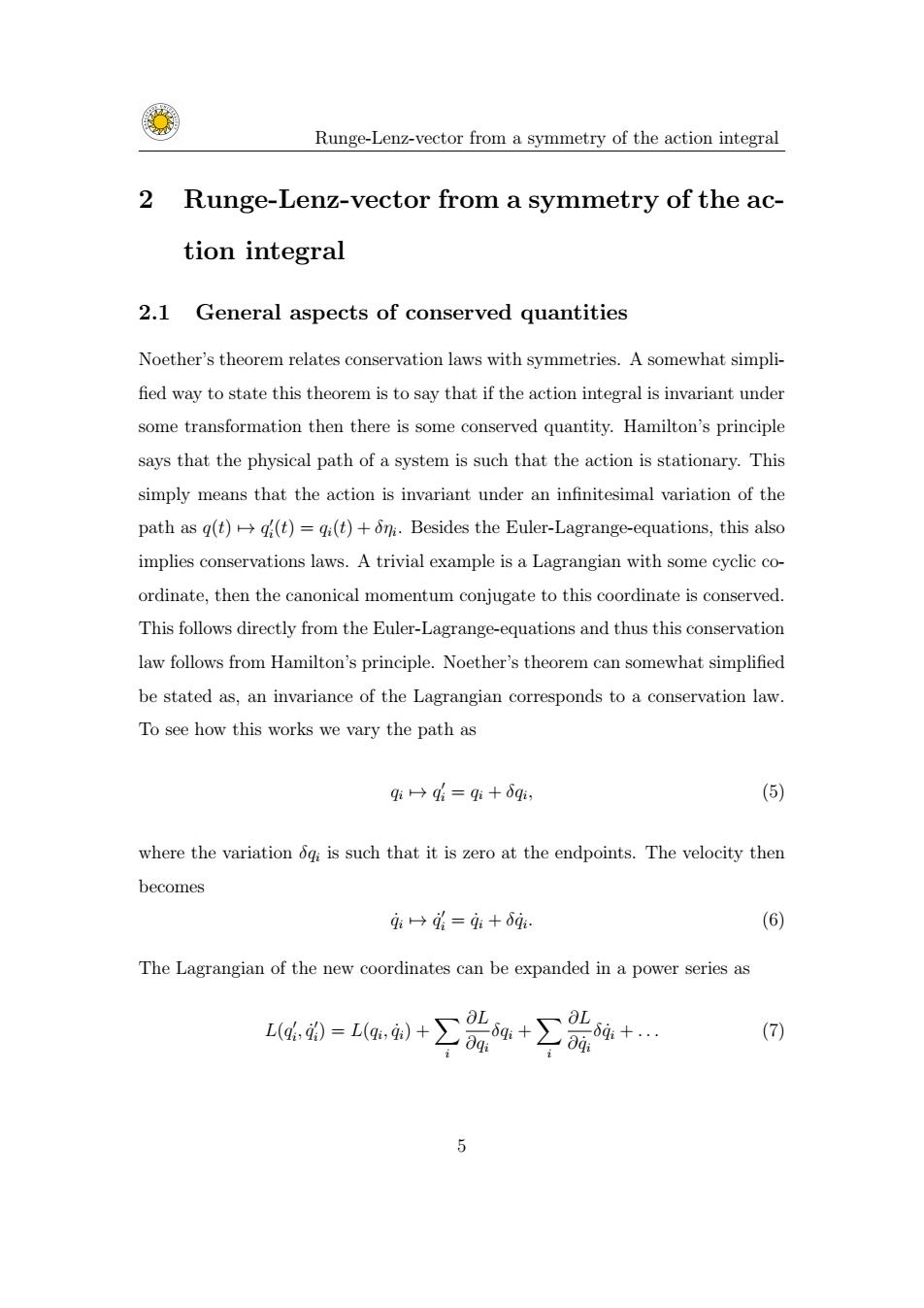正在加载图片...

Runge-Lenz-vector from a symmetry of the action integral 2 Runge-Lenz-vector from a symmetry of the ac- tion integral 2.1 General aspects of conserved quantities Noether's theorem relates conservation laws with symmetries.A somewhat simpli- fied way to state this theorem is to say that if the action integral is invariant under some transformation then there is some conserved quantity.Hamilton's principle says that the physical path of a system is such that the action is stationary.This simply means that the action is invariant under an infinitesimal variation of the path as g(t)(t)=qi(t)+oni.Besides the Euler-Lagrange-equations,this also implies conservations laws.A trivial example is a Lagrangian with some cyclic co- ordinate,then the canonical momentum conjugate to this coordinate is conserved. This follows directly from the Euler-Lagrange-equations and thus this conservation law follows from Hamilton's principle.Noether's theorem can somewhat simplified be stated as,an invariance of the Lagrangian corresponds to a conservation law. To see how this works we vary the path as 9→q=9+0q, (5) where the variation ogi is such that it is zero at the endpoints.The velocity then becomes 4→6=+0: (6) The Lagrangian of the new coordinates can be expanded in a power series as 60=e创+影+∑ 6+ (7)Runge-Lenz-vector from a symmetry of the action integral 2 Runge-Lenz-vector from a symmetry of the action integral 2.1 General aspects of conserved quantities Noether’s theorem relates conservation laws with symmetries. A somewhat simpli- fied way to state this theorem is to say that if the action integral is invariant under some transformation then there is some conserved quantity. Hamilton’s principle says that the physical path of a system is such that the action is stationary. This simply means that the action is invariant under an infinitesimal variation of the path as q(t) 7→ q 0 i (t) = qi(t) + δηi . Besides the Euler-Lagrange-equations, this also implies conservations laws. A trivial example is a Lagrangian with some cyclic coordinate, then the canonical momentum conjugate to this coordinate is conserved. This follows directly from the Euler-Lagrange-equations and thus this conservation law follows from Hamilton’s principle. Noether’s theorem can somewhat simplified be stated as, an invariance of the Lagrangian corresponds to a conservation law. To see how this works we vary the path as qi 7→ q 0 i = qi + δqi , (5) where the variation δqi is such that it is zero at the endpoints. The velocity then becomes q˙i 7→ q˙ 0 i = ˙qi + δq˙i . (6) The Lagrangian of the new coordinates can be expanded in a power series as L(q 0 i , q˙ 0 i ) = L(qi , q˙i) +X i ∂L ∂qi δqi + X i ∂L ∂q˙i δq˙i + . . . (7) 5